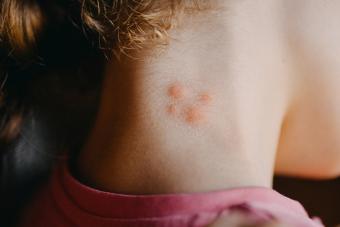
If you notice a new mole on your face or body, medical experts suggest that you watch it. Most common moles are harmless. But how do you know if it is a mole or melanoma? If the mole starts changing or takes on certain characteristics, you should connect with your healthcare provider. Some moles may indicate melanoma, a form of skin cancer.
Mole or Melanoma? How to Tell the Difference
The American Academy of Dermatology (AAD) provides a body mole map to help consumers evaluate the moles on their skin. They suggest that you check your skin for changes. To help with this process, it can be helpful to know the difference between a normal mole and an atypical mole that can be a sign of melanoma.
What Is a Mole?
Moles (also called "nevi") are common growths on the skin. According to the National Library of Medicine, moles occur when pigment cells (melanocytes) grow in clusters. They say that most people have between 10 and 40 moles.
The American Academy of Dermatology says that a normal mole is:
-
Flat or slightly raised
-
Round
-
Unchanged from month to month
-
Usually brown, but might be tan, black, red, pink, blue, skin-toned, or colorless
What Is Melanoma?
According to medical sources, about one out of every ten people will develop an atypical mole, called dysplastic nevi. These moles can develop into melanoma, a type of skin cancer. These moles should be checked by your doctor.
The AAD says that atypical moles:
-
Are larger than an eraser on the end of a pencil
-
Are not round and have an odd shape
-
Show color mixes of tan, brown, red, and pink
They suggest that consumers use their ABCDE method of identifying moles of concern:
-
A = Asymmetry. One half is unlike the other.
-
B = Border. An irregular, scalloped, or poorly defined border.
-
C = Color. Is varied from one area to another; has shades of tan, brown, or black; is sometimes white, red, or blue.
-
D = Diameter. Melanoma are usually greater than 6 mm (the size of a pencil eraser) when diagnosed, but they can be smaller.
-
E = Evolving. A mole or skin lesion that looks different from the rest or changes in size, shape, or color.
What to Do If You Have a Mole

Dermatologists suggest that you check your skin regularly and get any atypical skin changes, especially atypical moles, checked by a health professional. When it is caught early, melanoma can be cured. But if it is not treated, the disease can be life-threatening. They also advise that you protect your skin from the sun by wearing sunscreen or protective clothing.
Usually, common moles do not require treatment unless they are uncomfortable or if you find them to be unsightly. You should never remove moles at home.
If your dermatologist is concerned about an atypical mole, they may remove it through surgical excision or a surgical shave. The mole will then be examined in a lab to check for cancer cells.
If you are diagnosed with melanoma, your doctor will work together to determine the best way to move forward. There are different medications and treatment options for you to explore and available and your health care team can make recommendations based on your specific condition and health history.







